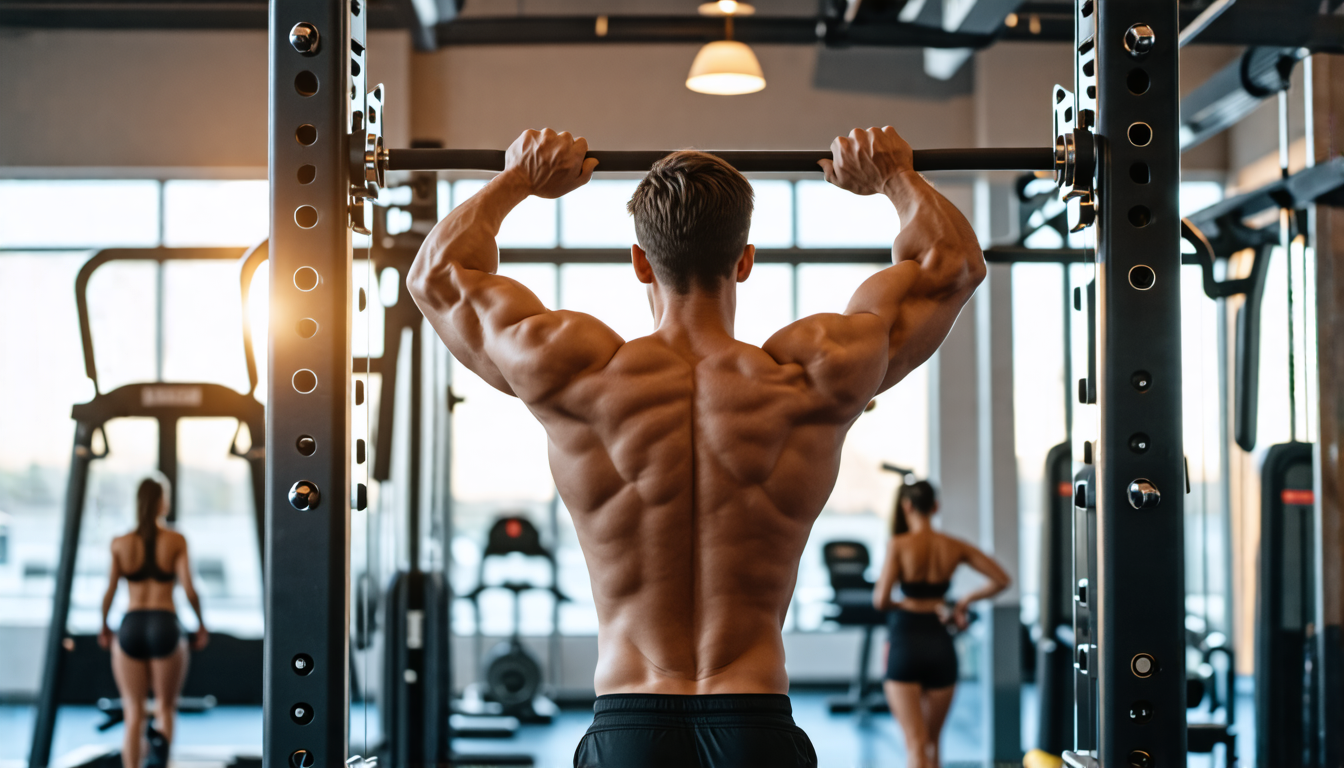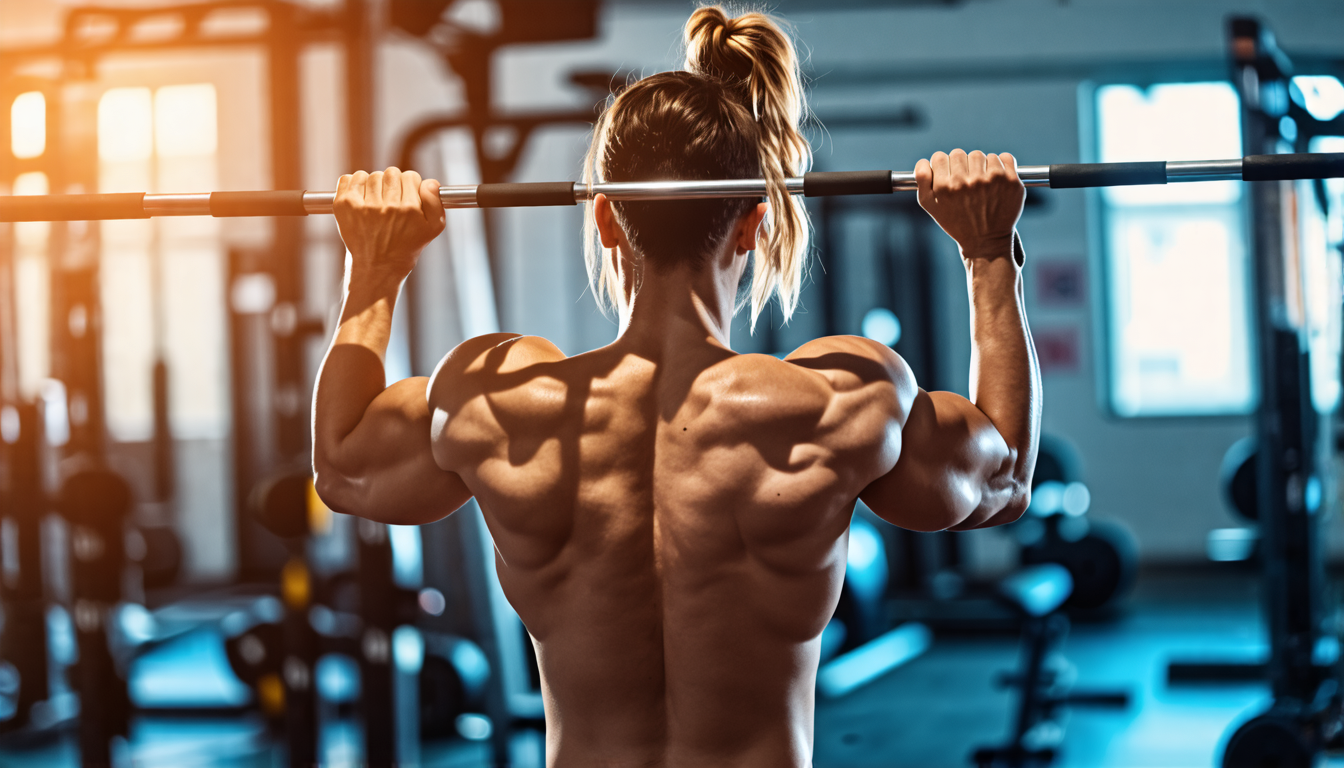When it comes to home fitness, effectively targeting shoulder muscles doesn’t require elaborate gym equipment. Utilizing a fitness bar can be a game-changer in your workout routine, providing an accessible and efficient way to enhance your upper body strength right from the comfort of your own home. Understanding shoulder anatomy is vital to optimize your workouts. The major muscles in this region include the deltoids, rotator cuff, and trapezius, each playing crucial roles in the stability and movement of your arms and shoulders. By incorporating a fitness bar into your regimen, you can perform a variety of exercises that focus on these muscles, promoting strength, muscle mass, and overall stability. Whether you’re looking to sculpt your physique or improve your functional fitness, using a fitness bar at home allows you to specifically target and develop these key areas. As you embark on your shoulder training journey, you’ll discover a suite of exercises such as the overhead press and upright row that can be perfected with proper form, maximizing muscle engagement while minimizing the risk of injury. Embrace the versatility of the fitness bar to transform your home into a personal powerhouse for shoulder development.
To effectively focus on shoulder muscles using a fitness bar, it is crucial to first understand shoulder anatomy and how a fitness bar can be beneficial in targeting these areas. The shoulder is a complex region composed of several muscles that facilitate a wide range of upper body movements. The primary muscles involved include the deltoids, rotator cuff, and trapezius.
Major Shoulder Muscles
Deltoids
The deltoids are the rounded, triangular muscles located on the top of the shoulder. They are comprised of three distinct heads: anterior (front), lateral (side), and posterior (rear). Each head plays a critical role in shoulder and arm movement. The anterior deltoid is mainly involved in shoulder flexion and internal rotation. The lateral deltoid is crucial for shoulder abduction, lifting the arm away from the body, while the posterior deltoid aids in shoulder extension and external rotation.
Rotator Cuff
The rotator cuff is a group of four smaller muscles and their associated tendons: supraspinatus, infraspinatus, teres minor, and subscapularis. These muscles stabilize the shoulder joint and allow for a wide range of arm movements such as lifting and rotating. They are essential for maintaining shoulder stability, particularly during overhead activities.
Trapezius
The trapezius is a large muscle that extends from the base of the skull down to the mid-back. It is divided into three regions: upper, middle, and lower trapezius. The upper trapezius elevates the shoulders and assists in head movements, the middle trapezius retracts the scapula, and the lower trapezius helps in scapular depression and upward rotation, providing a foundation for shoulder mobility and strength.
Benefits of Using a Fitness Bar
Using a fitness bar is a highly effective way to engage the shoulder muscles due to its versatile nature, allowing for a wide range of exercises tailored specifically to the shoulders. The bar can be loaded with additional weights to increase resistance, which is beneficial for muscle growth and strength. Key benefits of using a fitness bar for shoulder workouts include:
- Enhanced Muscle Engagement: A fitness bar allows for compound exercises, which engage multiple joints and muscle groups simultaneously, maximizing shoulder muscle activation.
- Improved Stability and Strength: Balancing the bar requires stabilizing muscles like the rotator cuff to work harder, leading to increased shoulder stability and overall upper body strength.
- Balanced Muscle Development: By incorporating different exercises with a fitness bar, you can target all parts of the shoulder (anterior, lateral, and posterior deltoids), promoting balanced muscle growth and reducing the risk of imbalances that could lead to injury.
- Convenience for Home Workouts: Fitness bars are a versatile piece of equipment that can be easily integrated into home fitness routines. They require minimal setup and offer a wealth of exercise variations that can build shoulder strength effectively in a home gym environment.
By understanding the shoulder’s anatomy and leveraging the unique benefits of a fitness bar, individuals can effectively target their shoulder muscles. This provides a solid foundation for developing strength, improving stability, and increasing muscle mass, all of which are pivotal for achieving upper body fitness goals.

Top Fitness Bar Exercises for Optimal Shoulder Muscle Engagement
When aiming to strengthen and sculpt your shoulders, incorporating a fitness bar into your routine can be highly effective. A fitness bar, also known as a barbell, offers versatility and resistance that are ideal for shoulder exercises. Below, we explore some of the most effective exercises that target shoulder muscles, including the deltoids, rotator cuff, and trapezius, ensuring a comprehensive workout that promotes muscle engagement and development.
1. Overhead Press
The overhead press, often referred to as the barbell shoulder press, is a staple in any shoulder workout routine. This exercise predominantly targets the front and side deltoid muscles, while also engaging the triceps and upper chest.
How to Perform:
- Stand with your feet shoulder-width apart, holding the fitness bar with both hands in front of your shoulders. Your palms should face forward, and your grip should be slightly wider than shoulder-width.
- Engage your core and keep your back straight.
- Press the bar upwards until your arms are fully extended overhead.
- Slowly lower the bar back to the starting position.
Tips for Proper Form:
- Ensure your elbows do not flare out excessively to prevent shoulder strain.
- Avoid arching your back by bracing your core tightly.
- Perform movements in a controlled manner to enhance muscle recruitment.
2. Upright Row
The upright row is another excellent exercise that targets the shoulder muscles, particularly focusing on the trapezius and the side deltoids. It also engages the biceps, making it a compound lift.
How to Perform:
- Stand with your feet hip-width apart, holding the fitness bar with an overhand grip. Your hands should be closer together, about hip-width apart.
- Lift the bar towards your chin, leading with your elbows.
- Keep the bar close to your body as you lift.
- Lower the bar back down with control.
Tips for Proper Form:
- Focus on keeping your elbows higher than your wrists throughout the movement.
- To prevent wrist strain, ensure your wrists are straight and aligned with the forearms.
- Maintain a steady tempo to emphasize the shoulder and trapezius engagement.
3. Front Raises
Front raises are an isolation exercise that specifically targets the anterior deltoid muscles, effectively enhancing the definition and strength of the front part of the shoulder.
How to Perform:
- Stand upright, feet shoulder-width apart, holding a fitness bar with an overhand grip in front of your thighs.
- Raise the barbell in front of you until it reaches shoulder height while keeping your arms straight but not locked.
- Lower the bar back down slowly to the starting position.
Tips for Proper Form:
- Keep slight tension in your core and glutes to support your lower back.
- Do not swing the bar; use controlled movements to ensure shoulder isolation.
- Avoid lifting beyond shoulder height to minimize stress on the shoulder joint.
4. Bent-Over Row (Targeting the Rear Delts)
While the bent-over row is traditionally known for its impact on the back muscles, it also plays a vital role in developing the rear deltoids when performed with a specific focus.
How to Perform:
- With your feet shoulder-width apart, hold the fitness bar with both hands using an overhand grip.
- Bend your knees slightly and hinge at your hips to lean forward, keeping your back flat.
- Pull the bar towards your chest, squeezing the shoulder blades together.
- Lower the bar back down with a controlled motion.
Tips for Proper Form:
- Keep your neck aligned with your spine to avoid unnecessary strain.
- Focus on contracting the rear deltoids as you lift the bar.
- Engage your back muscles by keeping your shoulders back and down throughout the exercise.
Employing these fitness bar exercises in your home fitness bar setup not only optimizes shoulder muscle development but also contributes to overall shoulder health and function. Consistent practice with attention to form and proper technique will ensure you achieve robust shoulder strength, enhancing performance across various physical activities while reducing the risk of injury.
In conclusion, focusing on shoulder muscles using a fitness bar is an effective strategy for building strength, enhancing stability, and increasing muscle mass in this vital area of the upper body. By understanding the anatomy of the shoulder—particularly the deltoids, rotator cuff, and trapezius—and how these muscles contribute to broader upper body movements, individuals can better appreciate the benefits that targeted exercises using a fitness bar can offer. Exercises such as the overhead press, upright row, and front raises are specifically designed to engage the shoulder muscles intensively, when done with proper form and technique. This approach not only maximizes muscle engagement but also minimizes the risk of injury, ensuring a safe workout environment.
Integrating these exercises into a home fitness regimen allows individuals to conveniently work on their shoulder muscles without the need for a gym membership or extensive equipment. A fitness bar is an accessible tool that can transform a home workout space into an effective training ground for shoulder development. By maintaining a consistent routine and paying close attention to exercise form, anyone can harness the full potential of a fitness bar to improve their shoulder strength and appearance, contributing to overall upper body fitness and functionality.

